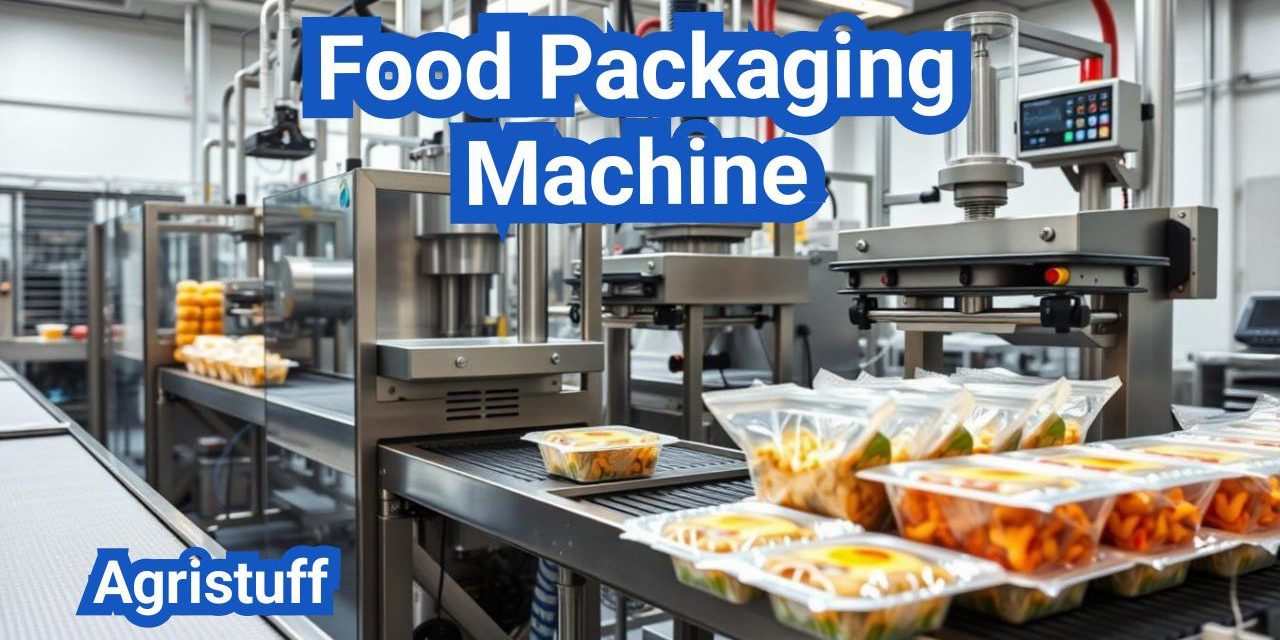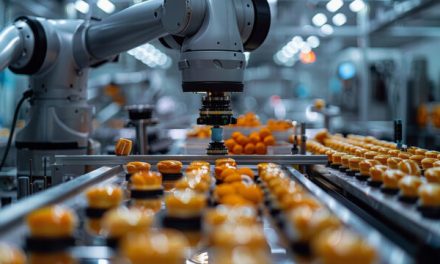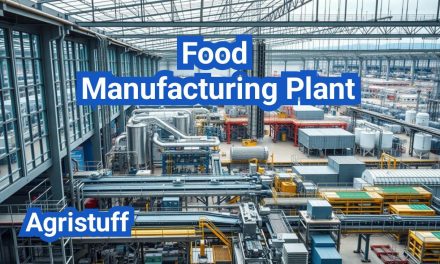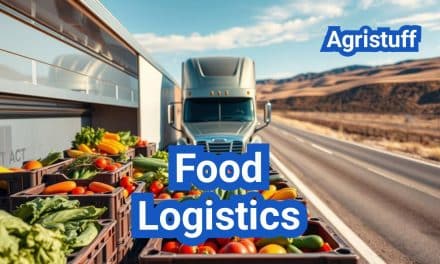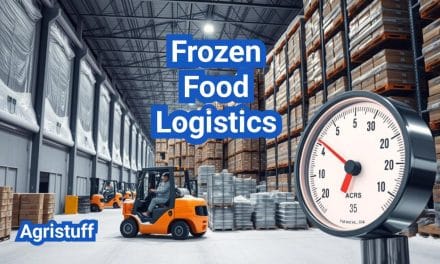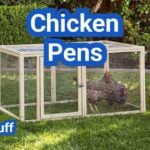The food packaging industry relies heavily on efficient and reliable machinery to ensure products are packaged safely and effectively. Among the crucial equipment used are fillers, sealers, and checkweighers, which play vital roles in various production processes.
Fillers accurately dispense products into containers, while sealers ensure these containers are closed securely to maintain freshness and safety. Meanwhile, checkweighers verify the weight of packaged products, helping to prevent under or overfilling.
Selecting the right packaging equipment is crucial for enhancing efficiency, reducing labor costs, and improving product quality. This buyer’s guide will explore the different types of industrial food packaging machines and their applications.
Key Takeaways
- Understanding the roles of fillers, sealers, and checkweighers in food production.
- The importance of selecting the right packaging equipment for specific production needs.
- Overview of the different types of industrial food packaging machines.
- Applications of packaging machinery in various industries.
- Regulatory requirements for food packaging machinery.
The Evolution of Food Packaging Machines in Modern Production
The integration of Industry 4.0 principles has brought about a new era in food packaging automation, transforming the way products are packaged and prepared for distribution. This shift towards automation is driven by the need for increased efficiency, reduced labor costs, and improved product quality.
Current Trends in Food Packaging Automation
Modern packaging machinery incorporates advanced technologies such as robotics, artificial intelligence, and IoT connectivity. These innovations enable real-time monitoring, predictive maintenance, and flexible production lines that can be easily adjusted to accommodate different products.
One of the key trends is the adoption of automated packaging solutions that integrate seamlessly with existing production lines. This includes machines capable of handling various packaging formats, from pouches to trays, and incorporating features like gas flushing for modified atmosphere packaging.
“The future of food packaging lies in smart, connected, and flexible systems that can adapt to changing consumer preferences and production demands.”
Economic Benefits of Automated Packaging Solutions
The economic benefits of adopting automated packaging solutions are multifaceted. By reducing the reliance on manual labor, businesses can lower operational costs and minimize the risk of human error. Automated systems also enable faster production rates, contributing to increased productivity and competitiveness.
| Benefits | Description | Impact |
|---|---|---|
| Reduced Labor Costs | Minimized manual intervention | Lower operational expenses |
| Increased Efficiency | Faster production rates | Improved productivity |
| Enhanced Quality Control | Consistent packaging quality | Better product presentation |
Furthermore, industrial food packaging machines and VFFS machines are being designed with energy efficiency and sustainability in mind, reducing the environmental footprint of packaging operations.
As the food packaging industry continues to evolve, manufacturers are turning to food packaging machine manufacturers who can provide not only high-quality machinery but also expertise in automation and Industry 4.0 technologies.
Essential Food Packaging Machine Categories for Manufacturers
The selection of appropriate food packaging equipment is vital for manufacturers aiming to optimize their production lines. Food packaging machines play a critical role in ensuring product safety, quality, and compliance with regulations.
Primary Packaging Equipment
Primary packaging equipment is directly involved in the packaging of food products. This category includes fillers and sealers that prepare products for distribution. Fillers are designed to accurately dispense products into containers, while sealers ensure that these containers are properly closed to maintain product freshness.
Examples of primary packaging equipment include:
- Liquid filling machines for beverages and sauces
- Powder filling machines for spices and instant foods
- Vacuum packaging machines for meat and dairy products
Secondary Packaging Systems
Secondary packaging systems are used to prepare packaged products for shipping and storage. This includes case packers and palletizers that group primary packaged products into cases or pallets. These systems enhance efficiency by automating the process of preparing products for distribution.
Examples of secondary packaging systems include:
- Case packers for grouping individual packages into cases
- Palletizers for stacking cases onto pallets
- Robotic palletizers for flexible and efficient palletizing
End-of-Line Packaging Solutions
End-of-line packaging solutions encompass the final stages of the packaging process, including labeling and inspection systems. These solutions ensure that products are properly labeled and meet quality standards before they are shipped to consumers.
Examples of end-of-line packaging solutions include:
- Labeling machines for applying product labels
- Inspection systems for detecting contaminants or defects
- Checkweighers for verifying product weight
| Packaging Machine Category | Examples | Function |
|---|---|---|
| Primary Packaging Equipment | Fillers, Sealers, Vacuum Packaging Machines | Directly packages food products |
| Secondary Packaging Systems | Case Packers, Palletizers, Robotic Palletizers | Prepares packaged products for shipping |
| End-of-Line Packaging Solutions | Labeling Machines, Inspection Systems, Checkweighers | Ensures product labeling and quality |
Comprehensive Guide to Food Filling Machines

The evolution of food filling machines has transformed the packaging landscape, offering diverse solutions for different product types. Food filling machines are designed to accurately and efficiently fill a wide range of products, from liquids and powders to granular foods.
Liquid Filling Technologies
Liquid filling technologies are crucial for products such as beverages, sauces, and oils. Piston fillers are commonly used for their precision and ability to handle a variety of viscosities. These machines measure the product volumetrically, ensuring consistent fill levels.
Other liquid filling technologies include gravity filling and pressure filling, each suited to different product characteristics and production speeds.
Powder and Granular Product Fillers
For powders and granular products, auger fillers are often employed. These machines use a screw mechanism to measure and dispense the product into containers. The accuracy of auger fillers can vary based on the product’s flow characteristics and the auger’s design.
Auger fillers are versatile and can be used for a variety of products, from spices to coffee beans.
Gravimetric Filling Systems for Maximum Accuracy
Gravimetric filling systems offer the highest accuracy by weighing the product as it is filled into the container. These systems are particularly valuable for products where precise fill weights are critical, such as in the packaging of nuts or coffee.
Gravimetric fillers can be more complex and costly than volumetric fillers but provide significant advantages in terms of accuracy and compliance with regulations.
Selecting the Right Food Packaging Machine for Your Production Line
The right food packaging machine can significantly enhance production efficiency and product quality. Selecting the appropriate machinery involves a thorough assessment of various factors that impact your production line’s performance.
Assessing Production Volume Requirements
Understanding your production volume requirements is critical in choosing a food packaging machine that meets your needs. Machines vary in their capacity to handle different production volumes, from low to high-speed operations.
Key considerations include:
- Daily production output
- Peak production periods
- Flexibility for future expansion
| Production Volume | Machine Type | Speed Range (units/hour) |
|---|---|---|
| Low | Semi-automatic | 100-500 |
| Medium | Automatic | 500-2000 |
| High | High-speed automatic | 2000-6000 |
Product Characteristics and Packaging Compatibility
The nature of your product and its packaging requirements play a significant role in machine selection. Factors such as product fragility, perishability, and packaging material compatibility must be considered.
For instance: Fragile products may require machines with gentle handling capabilities, while perishable goods might necessitate machines that can operate in a controlled environment or integrate with modified atmosphere packaging (MAP) systems.
Space Constraints and Facility Considerations
The physical space available in your facility and other infrastructure considerations can significantly impact your choice of packaging machinery. Machines come in various sizes, and some may require additional utilities or have specific installation requirements.
Facility considerations include:
- Available floor space
- Ceiling height
- Utility availability (e.g., electricity, compressed air)
By carefully assessing these factors, manufacturers can select a food packaging machine that not only meets their production needs but also integrates well with their existing facility infrastructure.
Sealing Technologies: Ensuring Product Freshness and Safety

The integrity of food packaging is heavily reliant on advanced sealing technologies that prevent contamination and spoilage. Effective sealing solutions are critical in maintaining product freshness, ensuring safety, and extending shelf life.
Heat Sealing Systems and Applications
Heat sealing is a widely used method in food packaging, involving the application of heat and pressure to create a secure seal. This technology is versatile, accommodating various packaging materials and formats. Heat sealing systems are particularly effective for products that require a high level of barrier protection.
The process involves bringing the packaging material to a temperature that melts the sealant layer, then applying pressure to ensure a tight bond. The result is a durable seal that prevents the ingress of moisture and contaminants.
Vacuum Packaging Machines
Vacuum packaging machines remove air from the package before sealing, significantly reducing the risk of spoilage and contamination. This method is particularly beneficial for products susceptible to oxidation, such as meats and cheeses.
By eliminating air, vacuum packaging inhibits the growth of aerobic bacteria and mold, thereby extending the product’s shelf life. The technology is also beneficial for preventing the loss of flavors and aromas.
Hermetic Sealing Solutions for Extended Shelf Life
Hermetic sealing creates an airtight seal, providing an exceptional barrier against external factors that can compromise product freshness. This technology is crucial for products that require long-term storage or have specific preservation needs.
The benefits of hermetic sealing include extended shelf life, protection against moisture and contaminants, and preservation of product quality. It is particularly valuable in the packaging of sensitive products, such as coffee, nuts, and dried fruits.
| Sealing Technology | Application | Benefits |
|---|---|---|
| Heat Sealing | Various packaging formats | Durable seal, barrier protection |
| Vacuum Packaging | Meats, cheeses, susceptible products | Extended shelf life, prevents oxidation |
| Hermetic Sealing | Sensitive products, long-term storage | Airtight seal, preserves quality |
Modified Atmosphere Packaging (MAP) Systems
MAP technology is transforming food packaging by extending shelf life and maintaining product freshness. Modified Atmosphere Packaging involves replacing the air in a package with a gas mixture to prevent spoilage and preserve the product’s quality.
Gas Flushing Technologies and Benefits
Gas flushing is a critical component of MAP systems, involving the removal of air from the package and its replacement with a specific gas mixture. Common gases used include nitrogen, carbon dioxide, and oxygen, each serving different purposes such as inhibiting microbial growth or preventing oxidation.
The benefits of gas flushing technologies include extended shelf life, reduced food waste, and the preservation of product appearance and nutritional value. For instance, nitrogen flushing can prevent the growth of aerobic bacteria, while carbon dioxide can inhibit the growth of mold and bacteria.
MAP Equipment Components and Operation
MAP equipment typically consists of gas flushing systems, sealing machines, and sometimes, gas mixing units. The operation involves flushing the package with the desired gas mixture, followed by sealing to prevent gas exchange with the external environment.
The efficiency and effectiveness of MAP systems depend on the precise control of gas composition, flow rates, and sealing processes. Modern MAP equipment often incorporates advanced technologies such as automated gas mixing and real-time monitoring of package atmosphere.
Product Categories Best Suited for MAP
MAP is particularly beneficial for products that are sensitive to oxygen, moisture, or microbial contamination. Categories that benefit from MAP include fresh meats, bakery products, snacks, and prepared meals.
| Product Category | Suitable Gas Mixture |
|---|---|
| Fresh Meats | O2/CO2/N2 |
| Bakery Products | CO2/N2 |
| Snacks | N2/CO2 |
| Prepared Meals | N2/CO2 |
Checkweighers: Critical Quality Control Components

The importance of checkweighers in quality control cannot be overstated, as they directly impact product safety and compliance. Checkweighers are designed to verify the weight of packaged products, ensuring that they meet the specified weight requirements.
Static vs. Dynamic Checkweighing Systems
Checkweighing systems can be categorized into static and dynamic systems. Static checkweighing involves weighing products that are stationary, typically used in applications where high accuracy is required but speed is not a critical factor. On the other hand, dynamic checkweighing systems weigh products as they move along the production line, offering a balance between speed and accuracy.
The choice between static and dynamic checkweighing depends on the production line’s requirements, including the need for speed, accuracy, and product handling.
Checkweigher Tolerance Standards and Compliance
Checkweighers must comply with regulatory standards, such as those outlined in NIST Handbook 133. These standards dictate the acceptable limits of error for checkweighers, ensuring that they provide accurate measurements. Understanding and adhering to these tolerance standards is crucial for maintaining compliance and avoiding potential legal issues.
- Checkweigher calibration to NIST standards
- Regular maintenance to ensure accuracy
- Training personnel on checkweigher operation and compliance
Integration with Rejection and Sorting Systems
Checkweighers are often integrated with rejection and sorting systems to automatically remove non-compliant products from the production line. This integration enhances efficiency and reduces the likelihood of human error. By detecting and rejecting products that are outside the acceptable weight range, checkweighers play a critical role in maintaining product quality and safety.
The seamless integration of checkweighers with other production line equipment underscores their importance in modern manufacturing processes.
Vertical Form Fill Seal (VFFS) Machines for Flexible Packaging

VFFS machines have revolutionized the packaging industry with their efficiency and versatility in producing flexible packaging. These machines are designed to form, fill, and seal packaging materials in a continuous process, making them highly suitable for a wide range of products, including snacks, coffee, and pet food.
Operating Principles and Applications
VFFS machines operate on a straightforward principle: they form a bag from a roll of film, fill it with the desired product, and then seal the bag. This process is highly automated, allowing for high-speed production that meets the demands of large-scale manufacturing. The applications of VFFS machines are diverse, catering to various industries that require flexible packaging solutions.
Bag Styles and Film Compatibility
The versatility of VFFS machines is evident in their ability to produce various bag styles, including pillow bags, gusseted bags, and stand-up pouches. The choice of bag style and film material is crucial for product protection, branding, and consumer convenience. VFFS machines can work with different types of films, such as polyethylene, polypropylene, and laminate films, offering flexibility in packaging design.
| Bag Style | Film Material | Application |
|---|---|---|
| Pillow Bags | Polyethylene | Snacks, coffee |
| Gusseted Bags | Polypropylene | Pet food, grains |
| Stand-up Pouches | Laminate Films | Coffee, snacks, cosmetics |
Speed, Efficiency, and Changeover Considerations
One of the key advantages of VFFS machines is their ability to operate at high speeds, significantly increasing production efficiency. Modern VFFS machines are equipped with advanced servo drives and control systems that enable quick changeovers between different packaging formats, minimizing downtime and enhancing overall equipment effectiveness (OEE).
Efficient packaging operations rely on the ability to adapt quickly to changing product requirements and packaging designs. VFFS machines, with their flexible design and advanced technology, are well-suited to meet these demands, making them a valuable asset in the packaging industry.
Top Food Packaging Machine Manufacturers in the USA

The USA is a hub for food packaging machine manufacturing, with several prominent companies operating in the region. These manufacturers offer a wide range of equipment designed to meet the diverse needs of the food industry.
Industry Leaders for Complete Packaging Lines
Several industry leaders in the USA provide comprehensive packaging solutions that cater to various food categories. Companies like ProMach and ILAPAK offer a broad portfolio of packaging machines, including fillers, sealers, and checkweighers. These manufacturers have established themselves through their commitment to innovation, quality, and customer service.
For instance, ProMach provides integrated packaging solutions that enhance production efficiency and product safety. Their product range includes vertical form-fill-seal machines, horizontal wrappers, and case packers, among others.
Specialized Equipment Providers by Food Category
Some manufacturers specialize in equipment for specific food categories, such as dairy, meat, or snack foods. For example, Scholle IPN is renowned for its bag-in-box and pouch packaging solutions, particularly for liquid products. Similarly, Handtmann offers advanced filling and portioning systems for meat and poultry products.
- Dairy Industry: Companies like Tetra Pak provide aseptic packaging solutions.
- Meat and Poultry: Manufacturers such as Handtmann offer specialized filling and portioning systems.
- Snack Foods: Companies like ILAPAK provide versatile packaging solutions for snacks.
Evaluating Manufacturer Support and Service Networks
When selecting a food packaging machine manufacturer, it’s crucial to evaluate their support and service networks. A reliable manufacturer should offer comprehensive after-sales support, including maintenance, repair services, and technical assistance. Evaluating the manufacturer’s ability to provide timely support is essential to minimize downtime and ensure continuous production.
Manufacturers with a strong presence in the USA typically have well-established service networks, ensuring that customers receive prompt support when needed. It’s also beneficial to consider manufacturers that offer training programs for operators to enhance their understanding of the equipment and improve overall efficiency.
Understanding Food Packaging Machine Pricing and ROI

Investing in food packaging machines requires a thorough understanding of their pricing and return on investment (ROI). The cost of these machines can vary significantly based on their type, capacity, and features. Manufacturers must consider several factors when evaluating the pricing of food packaging machines for their operations.
Price Ranges by Machine Category and Capacity
Food packaging machines can be categorized into different types, such as fillers, sealers, and checkweighers, each with its own price range. The capacity of the machine, measured in units per hour or minute, also significantly affects its pricing.
| Machine Category | Low Capacity Price Range | High Capacity Price Range |
|---|---|---|
| Liquid Fillers | $5,000 – $20,000 | $50,000 – $100,000 |
| Sealing Machines | $3,000 – $15,000 | $30,000 – $60,000 |
| Checkweighers | $8,000 – $30,000 | $40,000 – $80,000 |
Total Cost of Ownership Analysis
When evaluating food packaging machines, it’s crucial to consider the total cost of ownership (TCO), which includes not only the initial purchase price but also ongoing costs such as maintenance, energy consumption, and labor.
- Initial Purchase Price
- Maintenance and Repair Costs
- Energy Consumption
- Labor Costs for Operation and Maintenance
- Downtime and Potential Production Losses
Calculating Return on Investment Timeframes
To calculate the ROI timeframe, manufacturers need to consider the savings generated by the new equipment versus the total cost of ownership. This involves assessing factors such as increased production efficiency, reduced waste, and lower labor costs.
By understanding the pricing and ROI of food packaging machines, manufacturers can make informed decisions that optimize their production lines and improve their bottom line.
Regulatory Compliance for Food Packaging Equipment

Compliance with regulatory standards is essential for food packaging machinery. The food packaging industry is subject to a myriad of regulations designed to ensure consumer safety and product integrity. Understanding and adhering to these regulations is crucial for manufacturers to avoid legal repercussions and maintain consumer trust.
FDA 21 CFR 117 Requirements for Food Processing
The FDA’s 21 CFR 117 regulation outlines the Current Good Manufacturing Practice (CGMP), Hazard Analysis, and Risk-Based Preventive Controls for Human Food. This regulation mandates that food facilities implement preventive controls to minimize or prevent hazards. Key components include:
- Conducting a hazard analysis to identify potential risks
- Implementing preventive controls, such as sanitation and supply chain controls
- Maintaining records of preventive controls and their implementation
For food packaging equipment, this means ensuring that machinery is designed and maintained in a way that prevents contamination and ensures the safe processing of food products.
Food Contact Materials Regulations
Regulations governing food contact materials are critical to ensuring that packaging does not contaminate food products. The FDA regulates materials that come into contact with food to ensure they are safe for consumer use. This includes:
| Material | Regulatory Requirement | Compliance Measure |
|---|---|---|
| Stainless Steel | Must be resistant to corrosion and durable | Material certification and regular inspection |
| Plastics | Must comply with FDA regulations on food contact substances | Supplier documentation and compliance testing |
| Coatings | Must be non-toxic and durable | Coating certification and performance testing |
Ensuring compliance with these regulations involves selecting appropriate materials for food contact surfaces and verifying supplier compliance.
LACF 21 CFR 113 Considerations for Canned Foods
For canned foods, the regulation under 21 CFR 113 outlines specific requirements for thermally processed low-acid foods packaged in hermetically sealed containers. Key considerations include:
- Process filing: Manufacturers must file their processes with the FDA
- Record-keeping: Detailed records of the processing and packaging must be maintained
- Equipment validation: Regular validation of equipment to ensure it operates within specified parameters
Compliance with these regulations is crucial for ensuring the safety of canned food products and preventing potential health hazards.
Sanitary Design and Food Safety Standards

Ensuring food safety is paramount in the production process, and sanitary design plays a crucial role in achieving this goal. Sanitary design refers to the design and construction of equipment and facilities to prevent contamination and ensure the safety of food products. This involves creating an environment that is easy to clean and maintain, reducing the risk of bacterial growth and contamination.
3-A Sanitary Standards Implementation
The 3-A Sanitary Standards organization provides guidelines for the sanitary design of equipment used in the dairy and other food processing industries. Implementing these standards involves designing equipment with smooth, crevice-free surfaces that are easy to clean and inspect. This includes using materials that are resistant to corrosion and can withstand cleaning and sanitizing processes.
Key features of 3-A Sanitary Standards include:
- Smooth, self-draining surfaces to prevent accumulation of product and bacteria
- Crevice-free designs to eliminate areas where bacteria can harbor
- Easy-to-clean components and minimal use of fasteners
Clean-in-Place (CIP) and Wash-down Capabilities
Clean-in-Place (CIP) systems are designed to clean equipment without disassembly, reducing downtime and improving efficiency. CIP systems involve circulating cleaning solutions through the equipment to remove residue and bacteria. Wash-down capabilities are also essential for maintaining a clean environment, particularly in areas around equipment where splashes and spills can occur.
The benefits of CIP and wash-down capabilities include:
- Reduced labor costs due to less manual cleaning
- Increased production uptime as cleaning is done without disassembling equipment
- Improved sanitation as cleaning is done systematically and thoroughly
Material Selection for Food Contact Surfaces
The selection of materials for food contact surfaces is critical to ensuring food safety. Materials must be non-toxic, durable, and resistant to corrosion. Stainless steel is commonly used due to its resistance to corrosion and ease of cleaning. Other materials such as certain plastics and coatings may also be used, depending on the specific application and requirements.
Considerations for material selection include:
| Material | Properties | Applications |
|---|---|---|
| Stainless Steel | Corrosion-resistant, durable, easy to clean | Most food processing equipment |
| Plastics | Lightweight, corrosion-resistant, may be less expensive | Certain components, conveyor belts |
| Coatings | Can provide additional corrosion resistance, ease of cleaning | Surfaces that require extra protection |
Integrating New Machines into Existing Packaging Lines

Successful integration of new machines into existing packaging lines hinges on meticulous planning, compatibility assessment, and automation integration. This process is crucial for maintaining production efficiency and ensuring that new equipment works seamlessly with existing machinery.
Compatibility Assessment and Planning
Before integrating new machines, a thorough compatibility assessment is necessary. This involves evaluating the new equipment’s specifications, production capacity, and interface requirements to ensure they align with the existing packaging line. Manufacturers must consider factors such as machine dimensions, power requirements, and communication protocols to guarantee compatibility.
A detailed plan should be developed, outlining the integration process, timelines, and resource allocation. This plan should also include contingency measures for potential issues that may arise during integration.
Control Systems and Automation Integration
Control systems and automation play a vital role in integrating new machines into existing packaging lines. Modern packaging equipment often relies on sophisticated control systems, such as PLCs (Programmable Logic Controllers) and SCADA (Supervisory Control and Data Acquisition) systems, to manage and monitor production.
To ensure seamless integration, the control systems of new machines must be compatible with the existing infrastructure. This may involve configuring communication protocols, updating software, or integrating new hardware components. Effective automation integration enables real-time monitoring, data collection, and process optimization, ultimately enhancing overall production efficiency.
OpX Factory Acceptance Testing (FAT) Protocols
OpX Factory Acceptance Testing (FAT) protocols are essential for verifying that new machines meet performance specifications and are ready for integration into existing packaging lines. FAT involves a series of tests conducted at the manufacturer’s site before the equipment is shipped to the customer’s facility.
These tests typically include functional testing, performance verification, and safety checks. By conducting thorough FAT, manufacturers can identify and address potential issues early on, minimizing the risk of delays or equipment failures during production.
| Integration Aspect | Description | Benefits |
|---|---|---|
| Compatibility Assessment | Evaluating new equipment specifications and interface requirements | Ensures seamless integration, reduces downtime |
| Control Systems Integration | Configuring communication protocols and updating software | Enhances production efficiency, enables real-time monitoring |
| OpX FAT Protocols | Conducting functional testing, performance verification, and safety checks | Minimizes risk of equipment failures, ensures performance specifications are met |
Maximizing OEE in Food Packaging Operations
Maximizing Overall Equipment Effectiveness (OEE) is crucial for optimizing food packaging operations. OEE is a comprehensive metric that evaluates the efficiency of manufacturing equipment by considering three key factors: availability, performance, and quality.
Measuring Overall Equipment Effectiveness
To measure OEE, manufacturers must first understand its three components. Availability refers to the percentage of time that equipment is operational and available for production. Performance measures how efficiently the equipment is running compared to its maximum capacity. Quality assesses the percentage of products that meet quality standards without defects.
The formula for calculating OEE is: OEE = Availability × Performance × Quality. For instance, if a packaging line has an availability of 90%, a performance rate of 95%, and a quality rate of 99%, its OEE would be 0.9 × 0.95 × 0.99 = 0.846, or 84.6%.
Identifying and Addressing Efficiency Bottlenecks
Efficiency bottlenecks can significantly impact OEE. Common bottlenecks in food packaging operations include equipment failures, changeover times, and production line imbalances. To identify bottlenecks, manufacturers can use data analytics tools and conduct regular audits of their production lines.
Once bottlenecks are identified, strategies can be implemented to address them. For example, implementing predictive maintenance can reduce equipment failures, while SMED (Single-Minute Exchange of Die) techniques can minimize changeover times.
“The key to maximizing OEE is to understand that it’s not just about the machines; it’s about the entire production process and how all elements work together.”
— Industry Expert
Preventive Maintenance Strategies for Optimal Performance
Preventive maintenance is critical for maintaining high OEE levels. Regular maintenance activities, such as cleaning, lubricating, and inspecting equipment, can prevent unexpected failures and reduce downtime.
- Schedule regular maintenance during off-peak hours or planned shutdowns.
- Use condition-based maintenance tools to monitor equipment health.
- Train maintenance personnel to perform tasks efficiently.
By implementing these strategies, food packaging manufacturers can maximize their OEE, leading to increased productivity, reduced costs, and improved product quality.
Safety Features and OSHA Compliance Requirements
Ensuring safety in food packaging operations is crucial for preventing injuries and complying with OSHA regulations. Food packaging machines must be equipped with various safety features to protect operators and maintain regulatory compliance.
Machine Guarding and Operator Protection
Machine guarding is a critical safety feature that prevents operators from coming into contact with hazardous moving parts. Effective machine guarding includes barriers, covers, and interlocks that stop the machine if a guard is opened or removed. Examples of machine guarding include:
- Fixed guards that provide a physical barrier between the operator and the machine
- Interlocked guards that prevent machine operation when the guard is open
- Adjustable guards that can be adapted to different tasks or materials
Emergency Stop Systems and Safety Interlocks
Emergency stop systems are essential for quickly halting machine operation in case of an emergency. Safety interlocks ensure that the machine cannot be restarted until the fault or unsafe condition is corrected. Key aspects of emergency stop systems include:
- Easy accessibility to the emergency stop button
- Clear indication of the machine’s status (e.g., stopped or running)
- Automatic return to a safe state after an emergency stop
Training Requirements for Machine Operators
Proper training is vital for ensuring that machine operators understand the safety features and operational requirements of food packaging machines. Comprehensive training programs should cover:
- Machine operation and control
- Safety procedures and emergency protocols
- Regular maintenance and inspection tasks
By implementing these safety features and complying with OSHA regulations, food packaging operations can minimize the risk of accidents and ensure a safe working environment.
Making an Informed Food Packaging Machine Investment
Investing in the right food packaging machine is crucial for manufacturers to stay competitive in the market. As discussed, various factors such as production needs, product characteristics, and regulatory compliance must be considered when selecting packaging equipment.
Making an informed food packaging machine investment requires careful evaluation of different machine categories, including fillers, sealers, and checkweighers. By understanding the benefits and limitations of each type, manufacturers can optimize their production lines and improve overall efficiency.
When evaluating food packaging machine options, manufacturers should prioritize factors such as machine accuracy, speed, and safety features. Additionally, considering the total cost of ownership and return on investment timeframe is essential for making a well-informed decision.
By following the guidelines outlined in this article, manufacturers can ensure that their food packaging machine investment meets their production needs and regulatory requirements, ultimately leading to improved product quality and reduced costs.
FAQ
What are the different types of food packaging machines?
The main categories include primary packaging equipment, such as fillers and sealers, secondary packaging systems like case packers and palletizers, and end-of-line packaging solutions, including labeling and inspection systems.
How do automated packaging solutions benefit food manufacturers?
Automated packaging solutions enhance efficiency, reduce labor costs, and improve product quality by minimizing human error and increasing production speed.
What is the importance of gravimetric filling systems in food packaging?
Gravimetric filling systems provide maximum accuracy in filling products, ensuring that the correct amount is dispensed, which is crucial for maintaining product quality and reducing waste.
How do I select the right food packaging machine for my production line?
To select the right machine, consider factors such as production volume, product characteristics, packaging material compatibility, and facility constraints, including space and infrastructure.
What are the benefits of using modified atmosphere packaging (MAP) systems?
MAP systems extend shelf life by modifying the atmosphere within packages, preventing spoilage, and maintaining product quality, making them ideal for products like fresh produce and meats.
How do checkweighers contribute to quality control in food packaging?
Checkweighers ensure compliance with regulatory standards by detecting and rejecting non-compliant products, thus maintaining product quality and safety.
What are the key considerations for integrating new machines into existing packaging lines?
Key considerations include compatibility assessment, control systems and automation integration, and implementing OpX FAT protocols to ensure seamless integration and optimal performance.
How can overall equipment effectiveness (OEE) be maximized in food packaging operations?
OEE can be maximized by measuring availability, performance, and quality, identifying and addressing efficiency bottlenecks, and implementing preventive maintenance strategies.
What safety features are essential for food packaging machines?
Essential safety features include machine guarding, emergency stop systems, and safety interlocks, along with proper training for machine operators to prevent injuries and ensure compliance with OSHA regulations.
What are the regulatory requirements for food packaging equipment?
Regulatory requirements include FDA21 CFR117 for food processing, regulations for food contact materials, and LACF21 CFR113 considerations for canned foods, emphasizing the importance of compliance for ensuring food safety.
How does sanitary design impact food safety?
Sanitary design prevents contamination by ensuring that equipment is designed with smooth surfaces, crevice-free designs, and materials that are safe for food contact, thereby maintaining product safety.
What factors influence the pricing of food packaging machines?
Pricing is influenced by machine category, capacity, and features, as well as factors like maintenance, energy consumption, and labor costs, which contribute to the total cost of ownership.
How can return on investment (ROI) be calculated for food packaging machines?
ROI can be calculated by considering the cost savings and revenue generated by the machine, compared to its total cost of ownership, to determine the payback period.
Conclusion of: Food Packaging Machine
Food Packaging Machine: What It Is and Why It Matters
A food packaging machine is an integrated system that forms, fills, seals, weighs, labels, and inspects packages so food reaches U.S. consumers safely and consistently. Beyond speed, a food packaging machine must protect quality, control contamination risks, and document compliance in a way that satisfies auditors and retailers. The right specification links mechanical performance with food safety plans, labeling accuracy, and shelf-life targets, helping small and mid-size brands scale with confidence in the U.S. market. FSMA preventive controls overview
Regulatory Snapshot for U.S. Buyers
Before selecting a food packaging machine, map requirements to FDA Current Good Manufacturing Practice and preventive controls (21 CFR Part 117). These rules emphasize hygienic design, validation of controls, sanitation, allergen management, and documentation. A food packaging machine should support these controls with cleanable parts, robust enclosures, and easy verification. Build your user requirement specification (URS) around the parts of 21 CFR 117 that touch your processes, then ask vendors to show how their machine design aligns. 21 CFR Part 117 text
Food-Contact Materials and Components
Any component on a food packaging machine that touches product or primary packaging—nozzles, seals, hose linings, gaskets, or coatings—must be suitable for food contact. In the U.S., suppliers typically reference applicable regulations or Food Contact Notifications (FCNs). During procurement, request written confirmation and supporting citations for all wetted or contact parts on the food packaging machine, including adhesives or release agents used in sealing. This saves time during audits and helps avoid packaging recalls. FDA Food-Contact Substances (FCNs)
PFAS Phase-Out in Paper and Liners
For a food packaging machine that runs paper or paperboard, grease-proofing chemistries containing certain PFAS have been phased out in the U.S. Confirm your converters supply PFAS-free materials and document their compliance, especially for bakery liners, wraps, and clamshells. Your specification for the food packaging machine should list approved materials and verification steps so procurement and QA stay aligned. FDA PFAS market phase-out
Sanitary Design Basics to Build Into URS
To prevent microbial and foreign-material risk, a food packaging machine should follow recognized sanitary design principles: cleanable to a microbiological level, compatible materials, accessible surfaces, no hollow members without proper seals, and durable welds. These expectations reduce harborage points and speed sanitation, improving OEE. Embed checkable sanitary criteria in your RFQ and FAT for the food packaging machine so details aren’t left to interpretation later. Ten Principles of Sanitary Design
3-A and Hygienic Design Preferences
Many processors prefer a food packaging machine with hygienic features aligned to 3-A Sanitary Standards or equivalent guidance. Even when 3-A certification isn’t mandatory, asking for documentation on surface finishes, seals, slopes, and cleanability sets a clearer bar. This supports faster pre-op inspections and more reliable micro results after cleaning. 3-A fundamentals and regulatory ties
Fillers: Matching Product Rheology to Technology
A food packaging machine typically uses volumetric (piston/rotary), gravimetric (weigh), or flow-meter (magnetic mass/coriolis) fillers. Choose based on viscosity, particulates, and required accuracy. Piston fillers suit viscous sauces with chunks, mass-flow excels for oils, and weighers protect giveaway on high-value powders. Specify clean-break nozzles, CIP compatibility, and spare seals for the food packaging machine to keep accuracy tight as parts wear. Filler selection guide (OSU)
Form/Fill/Seal: Pouches, Sachets, and Bags
For flexible formats, a food packaging machine may use vertical form/fill/seal (VFFS) to create packs from rollstock, dose product, and seal rapidly. Options like zipper applicators, gas-flush, and intermittent vs. continuous motion expand capability. When scoping a food packaging machine for snacks or grains, capture film specs (thickness, sealant layers) and target seal strengths in your URS and FAT. VFFS equipment overview
Cans and Jars: When Scheduled Processes Apply
If your food packaging machine runs shelf-stable low-acid canned foods (LACF) or acidified foods, you enter a specialized space that requires scheduled processes under a qualified process authority, recordkeeping, and hermetic-seal verification. Build these filing, training, and testing expectations into your purchase and commissioning plan for the food packaging machine. 21 CFR 113 (LACF)
Sealers and Hermeticity Expectations
Seal integrity is central to any food packaging machine. For acidified foods and similar products, pH control, container suitability, and validated sealing parameters are essential. Add destructive seal-strength testing and leak testing to FAT/SAT protocols for the food packaging machine so quality baselines are established before startup. 21 CFR 114 (Acidified Foods)
MAP & Vacuum: Shelf-Life and Safety Controls
Using MAP or vacuum on a food packaging machine can extend shelf-life, but it raises anaerobic pathogen risks if temperature, gas mix, and sanitation aren’t controlled. Treat MAP settings as critical parameters in HACCP and verify films, valves, and seals routinely on the food packaging machine to prevent deviations. Vacuum/MAP basics and safety context
Retail and Commissaries: ROP Rules
When a food packaging machine is used in retail or commissary settings, Reduced Oxygen Packaging (ROP) provisions in the FDA Food Code may apply. Local adoption varies by state, so confirm which edition governs your site. Align the food packaging machine SOPs and training to those provisions to avoid compliance gaps. FDA Food Code 2022
Checkweighers for Net Contents Compliance
An in-line checkweigher paired with a food packaging machine verifies labeled net quantity and controls giveaway. U.S. enforcement uses NIST Handbook 133 for package net contents and Maximum Allowable Variations (MAVs). Specify sampling plans, rejection logic, and data retention for your checkweigher so it supports audits and retailer scorecards tied to the food packaging machine. NIST Handbook 133
Labels: Net Quantity Statements and Fonts
The printer/labeler on a food packaging machine must produce correct net quantity statements (by weight, measure, or count) with proper prominence and placement. Coordinate your label templates with regulatory text and brand artwork so the food packaging machine outputs remain compliant at every SKU changeover. 21 CFR 101.7 (Net Quantity)
Foreign Material Control: Metal Detection and X-ray
To reduce recalls, pair a food packaging machine with metal detection or X-ray inspection. These systems help catch tramp metal, stones, or dense plastics before case packing. Define test frequencies, reject tracking, and corrective actions, and document them in the food packaging machine quality plan for audits. FSIS foreign material control guidance
Operator Safety: Guarding and Risk Reduction
Every food packaging machine needs robust safeguarding, interlocks, and lockout/tagout points. OSHA 1910 Subpart O sets the baseline for guarding, and your OEM should provide a documented risk assessment. Make these deliverables part of the purchase order so the food packaging machine arrives audit-ready. OSHA 1910.212 (Machine Guarding)
Updated Safety Standard: ANSI/PMMI B155.1-2023
Modern safety thinking treats a food packaging machine as a lifecycle risk-managed system. The ANSI/PMMI B155.1-2023 standard helps designers and integrators analyze hazards and implement controls from concept through decommissioning. Ask vendors how their design process aligns before you sign. PMMI B155.1-2023 update
FAT: Don’t Ship Without It
A Factory Acceptance Test ensures a food packaging machine meets performance, hygiene, safety, and documentation requirements before shipment. Use standardized checklists so FAT data translates cleanly into startup plans and training. Include product trials, worst-case changeovers, and seal/weight tests in the FAT scope for the food packaging machine. OpX FAT protocols
Virtual FATs and Remote Witnessing
When travel is limited, a food packaging machine can still be validated via a structured virtual FAT. Require multi-camera views, calibrated instrument readouts, and recorded test evidence, then store videos as part of the device history for the food packaging machine. Virtual FAT guidelines
OEE and Continuous Improvement
Track availability, performance, and quality to see the real capacity of a food packaging machine. Use a common OEE definition so plants and OEMs speak the same language, and tie downtime codes to root causes you can fix. This turns the food packaging machine into a platform for measurable improvement. OEE guidelines (OpX)
Buyer’s Checklist: Throughput, Accuracy, and Materials
For a food packaging machine, define target packs-per-minute, fill accuracy, worst-case viscosities/temperatures, and container/film specs in your URS. Ask for nozzle/no-drip options, servo dosing, gas-flush, and validated sealing jaws if needed. Specify the test methods and sample sizes you’ll use to accept the food packaging machine, not just headline numbers. Spec’ing fillers for accuracy
Buyer’s Checklist: Changeover, Sanitation, and Spares
Every food packaging machine should feature tool-less change parts, clear sanitation work instructions, and readily available wear items. Request a spare-parts kit sized for 12–18 months and specify maximum changeover time targets. Sanitary design choices made up front will reduce cleaning labor and help the food packaging machine maintain high OEE. Sanitary design checklist
Buyer’s Checklist: Labeling, Coding, and Records
Tie the printer, labeler, and vision systems on a food packaging machine to your ERP or MES for date-code control and artwork versioning. Align label content with FDA net quantity and nutrition rules, and archive roll-change records to simplify traceability. This reduces rework and keeps the food packaging machine in regulatory alignment. Net quantity statement rules
Buyer’s Checklist: SAT, Training, and TCO
After delivery, a food packaging machine should pass Site Acceptance Testing (SAT) using the same metrics defined at FAT. Require operator and maintenance training, PM schedules, and a documented risk assessment. Establish a total cost of ownership (TCO) model so the food packaging machine’s energy use, parts, and labor stay predictable. Updated FAT/SAT guidance
Final thought
A modern food packaging machine is more than hardware—it’s a compliance and performance platform. If you anchor your URS to hygienic design, FSMA alignment, label and net-contents accuracy, safety standards, and an OpX-style FAT/SAT, you’ll buy speed and certainty. Keep an eye on materials trends (PFAS-free, recyclable films), measure OEE, and train operators so the food packaging machine keeps delivering reliable, retail-ready packs. OEE playbook for packaging lines
Sources & References
- FDA FSMA Preventive Controls for Human Food
- 21 CFR 117 (cGMP & Preventive Controls)
- FDA PFAS Market Phase-Out
- 3-A Sanitary Standards (overview)
- OSU: Filler Identification & Selection
- PMMI ProSource: VFFS Guide
- 21 CFR 113 (LACF)
- 21 CFR 114 (Acidified Foods)
- FDA Food Code (2022)
- NIST Handbook 133 (Net Contents)
- 21 CFR 101.7 (Net Quantity Statement)
- FSIS Foreign Material Control Guideline
- OSHA 1910.212 (Machine Guarding)
- ANSI/PMMI B155.1-2023 (PMMI)
- OpX Factory Acceptance Tests
- OpX OEE Guidelines
- OpX Updated FAT/SAT Guidance
- Packworld: Virtual FAT Guidelines

